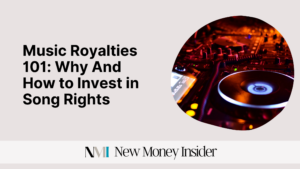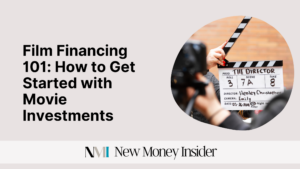Compounding Frequencies
Welcome to the insightful world of investment compounding, a fundamental concept that can significantly influence the growth of your investments.
Compounding, in its simplest form, is the process where the value of an investment increases because the earnings on an investment, both capital gains and interest, earn interest as time passes.
This snowball effect is crucial in the world of finance and investing, often referred to as the eighth wonder of the world by financial experts like Albert Einstein.
The importance of understanding compounding frequencies cannot be overstated for any investor. Whether you're a seasoned investor or just starting out, the frequency at which your investment compounds – annually, quarterly, or monthly – can have a profound impact on the total returns you receive.
The objective of this article is to delve into how different compounding intervals affect investment growth, providing a comprehensive understanding that will empower your investment decisions.
For a practical illustration of the power of compounding, consider this example from Investopedia, which demonstrates how different compounding frequencies can affect the growth of a single investment over time.
Understanding the Basics of Compounding
Compounding in investments refers to the process whereby earnings from an investment are reinvested to generate additional earnings over time.
This concept is the cornerstone of investing, where the income from your investments generates more income, leading to exponential growth over the long term.
The history of compounding dates back to 17th-century Italy with the work of mathematician Jacob Bernoulli, who discovered the mathematical constant 'e', which underpins continuous compounding.
His discovery paved the way for a deeper understanding of compound interest and its implications in finance and economics.
Key terms and concepts essential in understanding compounding include:
- Principal: The initial amount of money invested.
- Interest Rate: The percentage at which the investment grows each period.
- Compounding Frequency: How often the investment earnings are reinvested to earn additional earnings.
These components play a crucial role in determining the growth of an investment. To grasp these concepts in action, The Balance offers an excellent breakdown of how compounding works in different scenarios.
In the following sections, we will explore various compounding frequencies and their implications in more detail, using real-life case studies and examples to bring these concepts to life.
By understanding these principles, you can make more informed decisions about where and how to invest your money for optimal growth.
Annual Compounding
Explanation of Annual Compounding:
Annual compounding in investments refers to the process where the interest earned on an investment is calculated and added to the principal once a year.
This means that each year, the investment grows by a certain percentage, and this growth is then used as the base for calculating the next year's interest.
Pros and Cons of Annual Compounding for Investors:
Pros:
- Simplicity: Annual compounding is straightforward to understand and calculate, making it accessible for most investors.
- Predictability: It offers a clear, predictable pattern of growth, ideal for long-term planning.
Cons:
- Slower Growth: Compared to more frequent compounding, annual compounding may result in slower growth of investment due to less frequent addition of interest.
Real-World Examples and Case Studies:
A classic example is a long-term bank deposit or a bond that compounds annually.
For instance, a $10,000 investment at a 5% annual interest rate would grow to about $16,289 over 10 years with annual compounding. This calculator from the U.S. Securities and Exchange Commission can help visualize this growth.
How Annual Compounding Affects Investment Growth Over Long Periods:
Over extended periods, annual compounding can significantly enhance the value of an investment. The growth might seem slow initially, but over decades, the effects of compounding become markedly more pronounced.
Quarterly Compounding
Overview of Quarterly Compounding and How it Works:
Quarterly compounding means that the interest is calculated and added to the principal every three months. This more frequent compounding results in the interest for the next period being calculated on a slightly higher principal.
Comparing Quarterly to Annual Compounding:
When comparing quarterly to annual compounding, the main difference is the frequency of compounding. Quarterly compounding can lead to slightly higher returns over time because the interest is compounded more frequently.
Benefits and Potential Drawbacks for Investors:
Benefits:
- Higher Returns: More frequent compounding can result in higher overall returns, especially noticeable in long-term investments.
- Compounding Effect: The compounding effect becomes more powerful with more frequent interest calculations.
Drawbacks:
- Complexity: Calculating returns can be more complex than with annual compounding.
- Minimal Difference in Short Term: The benefits of quarterly over annual compounding are more noticeable over longer periods.
Case Studies or Examples Illustrating the Impact of Quarterly Compounding:
Consider an investment of $10,000 at a 5% interest rate. With quarterly compounding, the investment would grow to about $16,386 in 10 years, slightly more than with annual compounding.
For an interactive insight into these calculations, Bankrate's compound interest calculator is a useful tool.
In both annual and quarterly compounding, the principle of compounding interest works in favor of the investor, albeit at different rates. The choice between them depends on individual investment goals and the specific details of the investment opportunity.
Impact of Compounding Frequency in Different Investment Vehicles
How Compounding Frequency Plays Out in Various Investment Options:
- Savings Accounts: Often compound interest daily or monthly, leading to moderate growth. Bankrate provides insights on how this impacts savings over time.
- Certificates of Deposit (CDs): Typically offer a range of compounding frequencies, from daily to annually. The choice can affect the total interest earned, as explained in Investopedia's guide to CDs.
- Bonds: For bonds, compounding frequency can vary, but it's usually semi-annual. This U.S. Treasury resource explains how it works for Treasury bonds.
- Stocks: Compounding in stocks comes through reinvested dividends. The frequency of compounding depends on how often dividends are paid and reinvested. The Motley Fool offers insights into stock investments and dividends.
Special Considerations for Retirement Accounts (e.g., 401(k), IRA):
Retirement accounts often benefit significantly from compounding, especially with long-term investments.
Understanding the compounding frequency in these accounts is crucial, as it can substantially impact retirement savings. This article from NerdWallet explains how compounding works in retirement accounts.
Strategies for Maximizing Compounding Benefits
Tips for Investors to Leverage Compounding Frequency for Maximum Growth:
- Start investing early to maximize the compounding periods.
- Reinvest dividends and interest.
- Choose investments with more frequent compounding if it aligns with your goals.
The Role of Reinvestment in Compounding
Reinvesting dividends or interest plays a critical role in compounding, as it increases the principal amount, leading to higher interest calculations in subsequent periods.
The Impact of Additional Contributions and Withdrawal Timing
Making regular additional contributions can significantly enhance the compounding effect. Conversely, early withdrawals can greatly diminish the benefits of compounding. This calculator from Calculator.net can help illustrate these impacts.
Common Misconceptions and Pitfalls
Addressing Common Misunderstandings About Compounding Frequencies
One common misconception is that the difference in final amounts between different compounding frequencies is vast.
While more frequent compounding typically yields higher returns, the difference might not be as substantial as some believe, especially for short-term investments.
Potential Pitfalls and How to Avoid Them:
- Overlooking the Effect of Fees: High fees can negate the benefits of compounding. It’s important to consider the net return after fees.
- Misjudging Risk: More frequent compounding doesn’t necessarily mean higher risk. Risk assessment should be based on the underlying investment, not just on how often it compounds.
By understanding these aspects of compounding frequency across different investment vehicles, as well as strategies to maximize its benefits and common pitfalls to avoid, investors can make more informed decisions that align with their financial goals and risk tolerance.
Compounding Frequencies and Their Impact on Investment Growth
- Compounding Frequency Matters: The frequency at which your investment compounds - annually, quarterly, or monthly - can significantly influence the growth of your investment over time.
- Long-Term Benefits: More frequent compounding can lead to slightly higher returns, especially over longer periods.
- Tailored to Investment Goals: The choice of compounding frequency should align with your investment goals, time horizon, and risk tolerance.
- Understanding Equals Empowerment: A clear understanding of how compounding works in various investment vehicles empowers you to make better-informed decisions and potentially enhance your investment returns.
Final Thoughts on the Importance of Understanding Compounding for Informed Investment Decisions:
Understanding compounding is not just a matter of financial literacy; it's a crucial component of strategic investment planning. Recognizing the nuances of compounding frequencies can be the difference between mediocre and substantial long-term investment growth. As an investor, taking the time to understand and leverage the power of compounding can be one of the most rewarding steps in your financial journey.
Further Resources
Books, Websites, and Tools for Further Exploration on Compounding and Investment Growth:
Books:
- "The Compound Effect" by Darren Hardy
- "The Intelligent Investor" by Benjamin Graham for timeless investment principles, including compounding.
Websites:
- Investor.gov for educational materials on compounding interest.
- Morningstar for in-depth investment analysis and tools.
Tools:
- Compound interest calculators like those at Calculator.net for visualizing compounding effects.
Contact Information for Financial Advisors or Investment Professionals for Personalized Advice:
- Certified Financial Planners: Contact the CFP Board to find a certified professional.
- Investment Advisors: Use the Financial Planning Association or the National Association of Personal Financial Advisors for finding qualified advisors.
By utilizing these resources and seeking professional advice when needed, you can deepen your understanding of compounding frequencies and effectively apply this knowledge to your investment strategy.
Remember, the journey to financial success is continuous, and staying informed and proactive is key to navigating it successfully.



